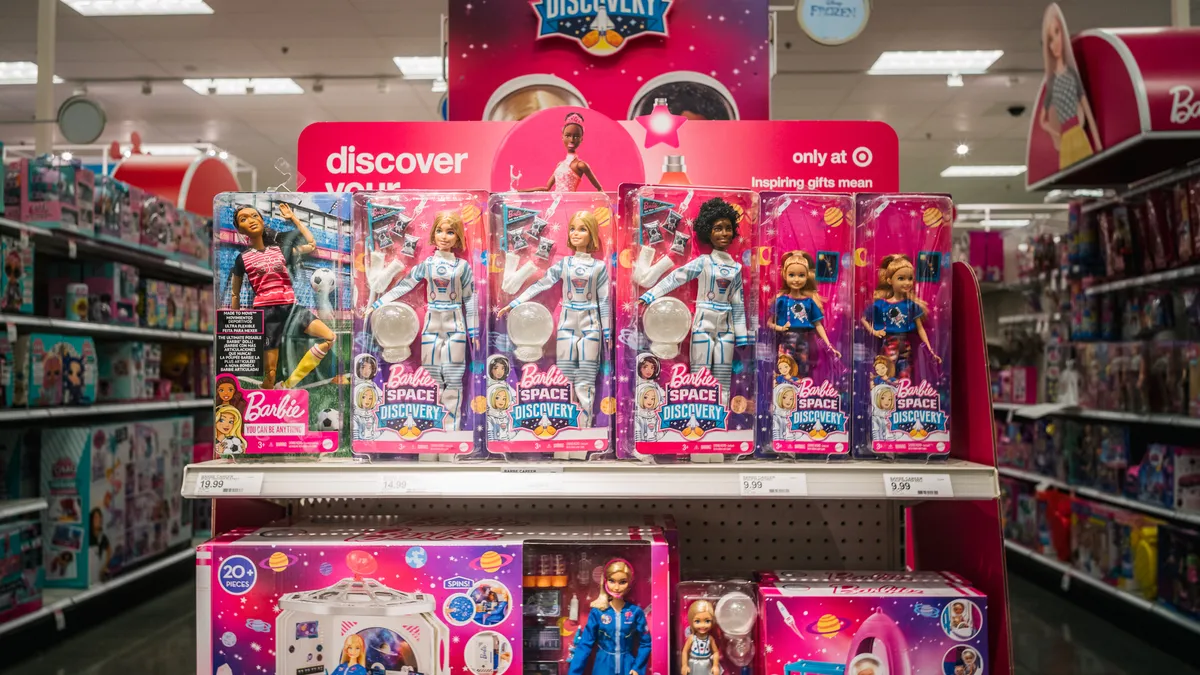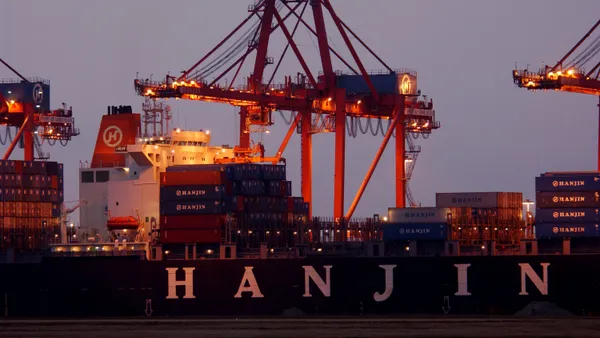Dive Brief:
- Mattel is relying more on nearshoring and contracting ocean freight capacity further in advance to ensure toys make it on shelves in time for the holiday season, CEO Ynon Kreiz said in an earnings call late last month.
- The company behind Barbie dolls and Fisher-Price toys is also using dual source manufacturing for "critical product lines," pulling forward orders and expediting procurement of raw materials as it looks to overcome commodity shortages and rising port congestion. "We anticipated short supply and longer lead times, and factored that into our planning with mitigating actions," said Kreiz.
- Still, Mattel hasn't been entirely immune to disruption, and the company sees significant costs tied to the ongoing resin shortage and the soaring demand for ocean freight. Resin and ocean shipping made up around 15% to 20% of the company's cost base in Q3, according to COO Richard Dickson.
Dive Insight:
More than 85% of toys sold in the U.S. are manufactured overseas according to the American Toy Association, leaving toymakers highly exposed to port congestion and escalated ocean freight costs on the Transpacific.
As other businesses warn their toys may not make it in time for the holiday season, Mattel remains confident it can meet the high demand for its products, in part because it shifted production closer to its distribution base.
"We leveraged our scale, our diverse manufacturing footprint to optimize nearshoring of production," Kreiz said. "We are ready for a strong holiday season."
Mattel also locked in ocean freight capacity and rates well in advance, a trend among many companies prioritizing security of supply over costs.
Ocean freight rates soared 385% from last year and were seven times the pre-pandemic norm at the end of October, according to data from Freightos. Meanwhile, containers are sitting at ports or in terminals sometimes for more than 30 days in some locations.
The congested environment has companies looking for alternatives in shipping products. Mattel secured access to more ports and shipping lanes. Hasbro said it has activated new ports in the U.S. and China, added ocean carrier contracts to increase capacity and is relying more on airfreight to ensure delivery. The company logged $100 million in unfulfilled orders in Q3 due to congestion and other supply chain problems.
Congestion issues come as toymakers see rising demand for their products. Toy sales increased 11% YoY in Q3, according to NPD Group, and that high demand has allowed companies to raise prices and offset rising costs. Mattel and Hasbro have moved to hike prices over the past year, according to earnings reports.
But even companies that have successfully navigated supply chain disruptions are being weighed down by higher costs, with Kreiz of Mattel saying ocean freight inflation is "impacting profitability."
Hasbro CFO Deb Thomas said the cost of airfreight in Q3 was much higher "than it typically is," and the company expects that cost to continue to soar. As of Nov. 1, air cargo rates from China to the U.S. were up 42% YoY, but still down from peak prices in May 2020, according to the TAC Index.
"We don't intend to take additional price increases this year," said Thomas. "So what we have built in is what is there to cover our costs."














